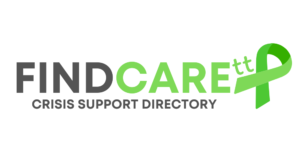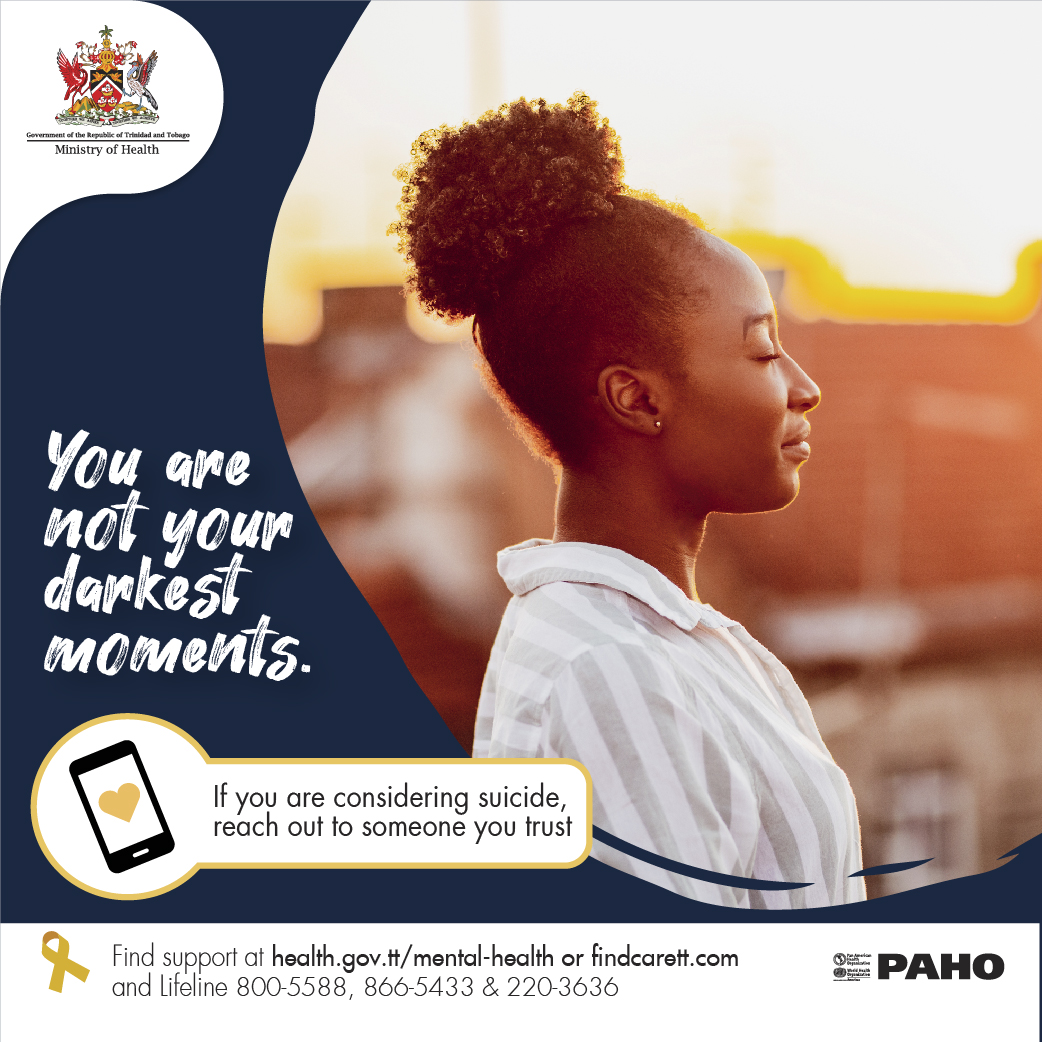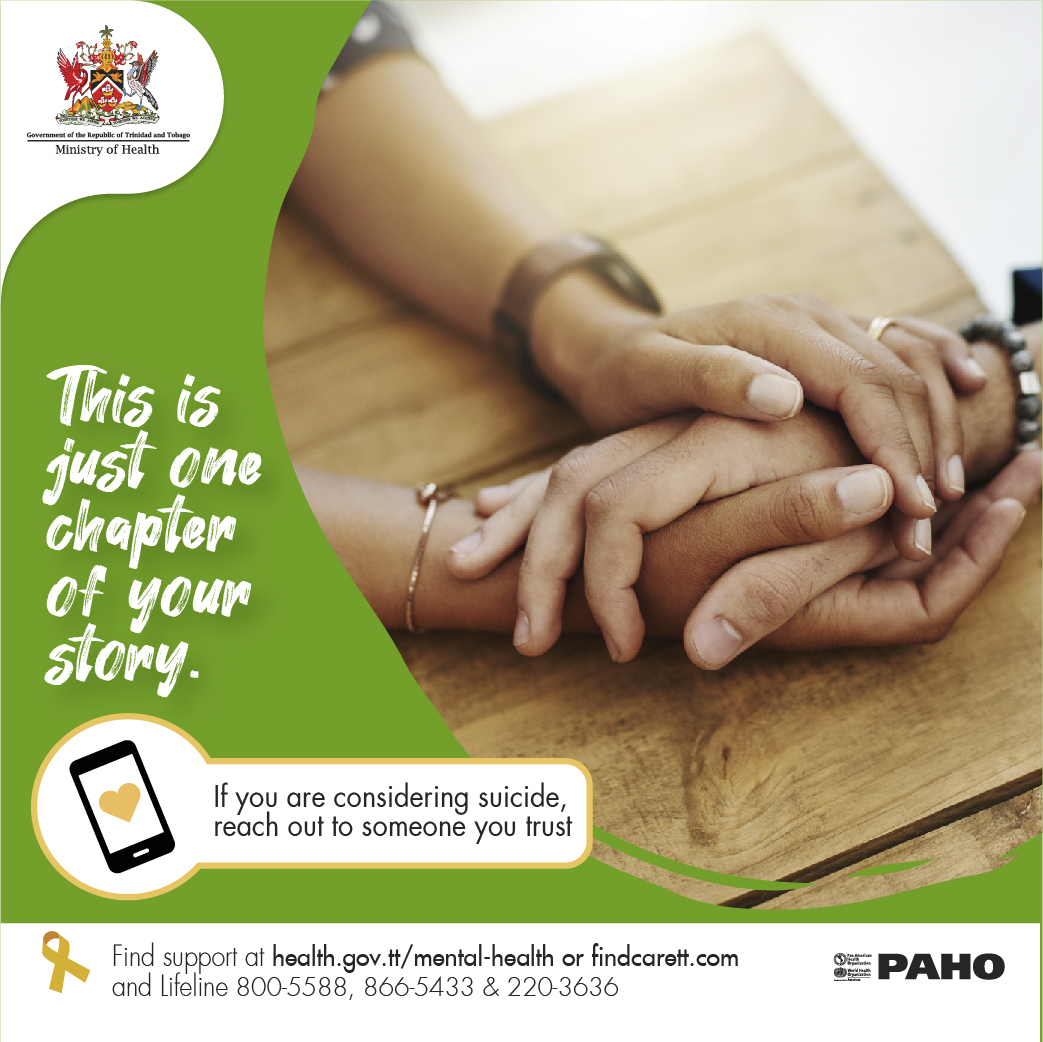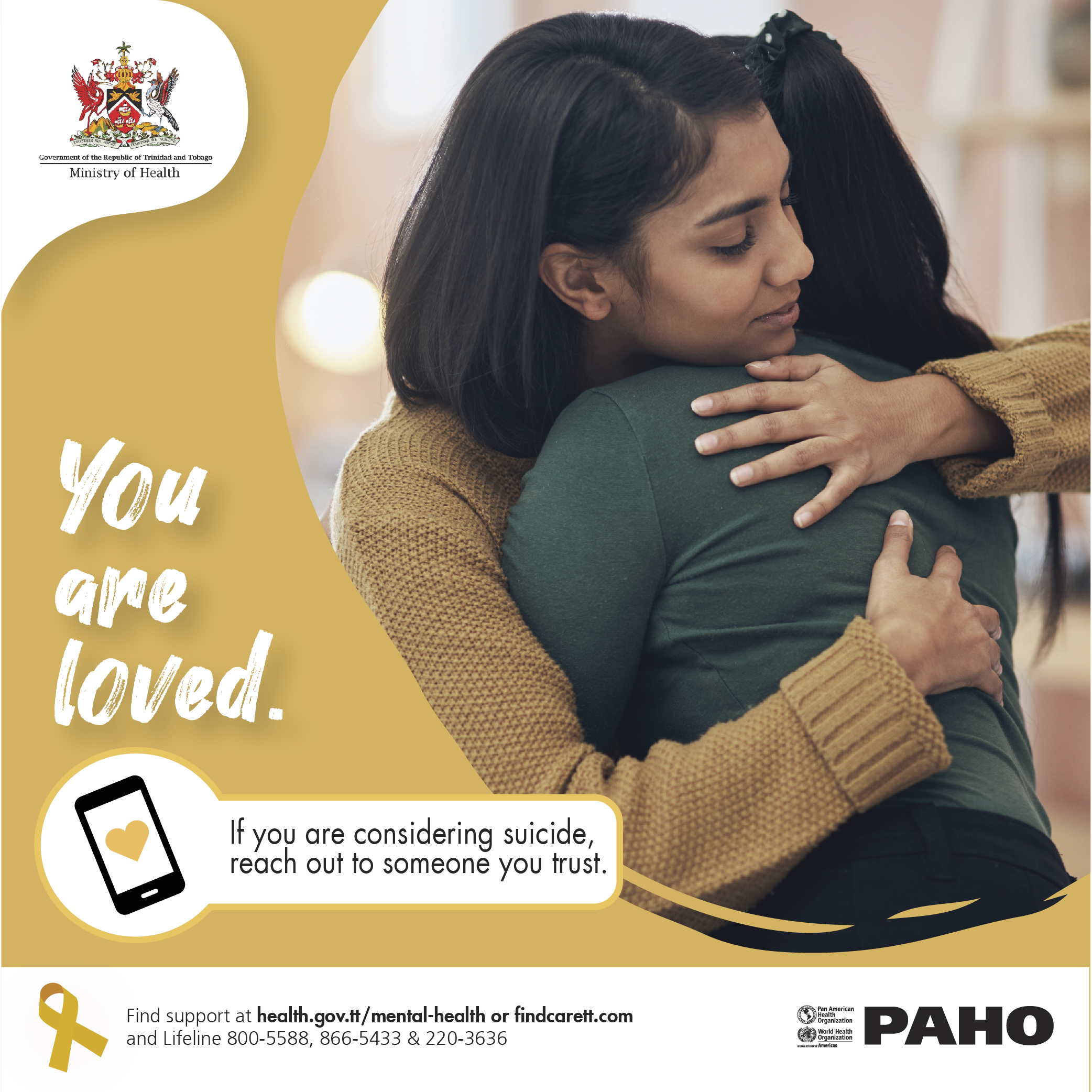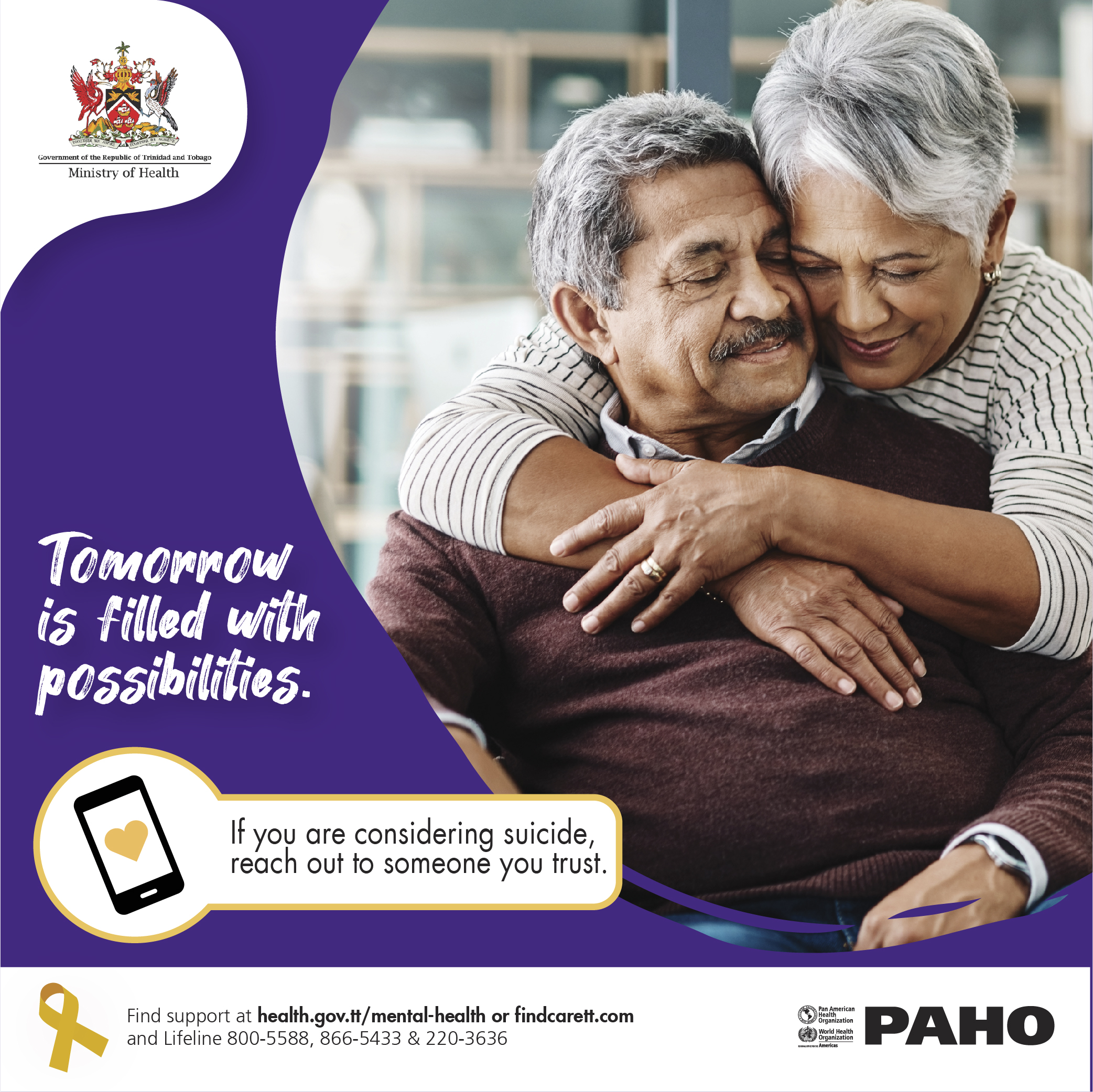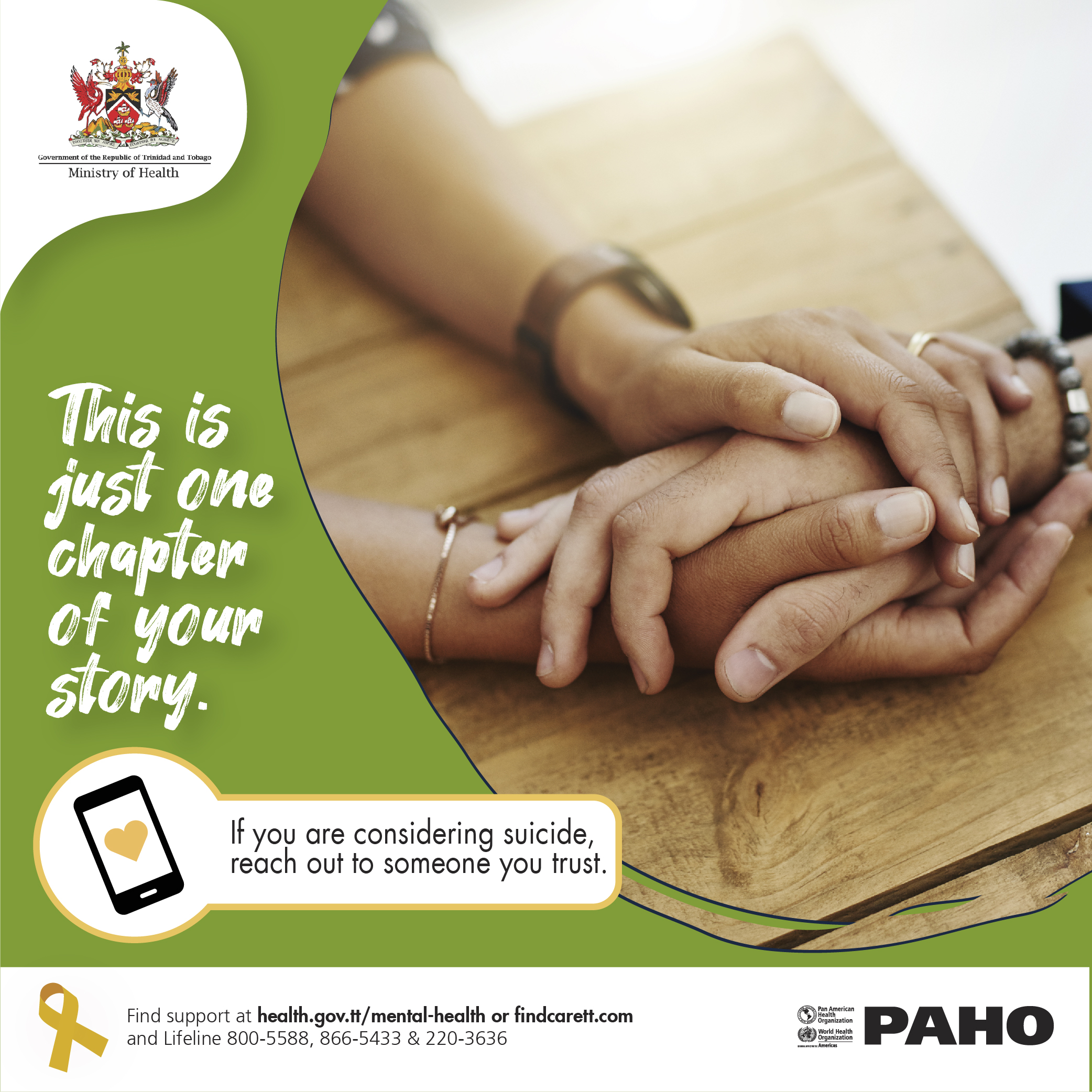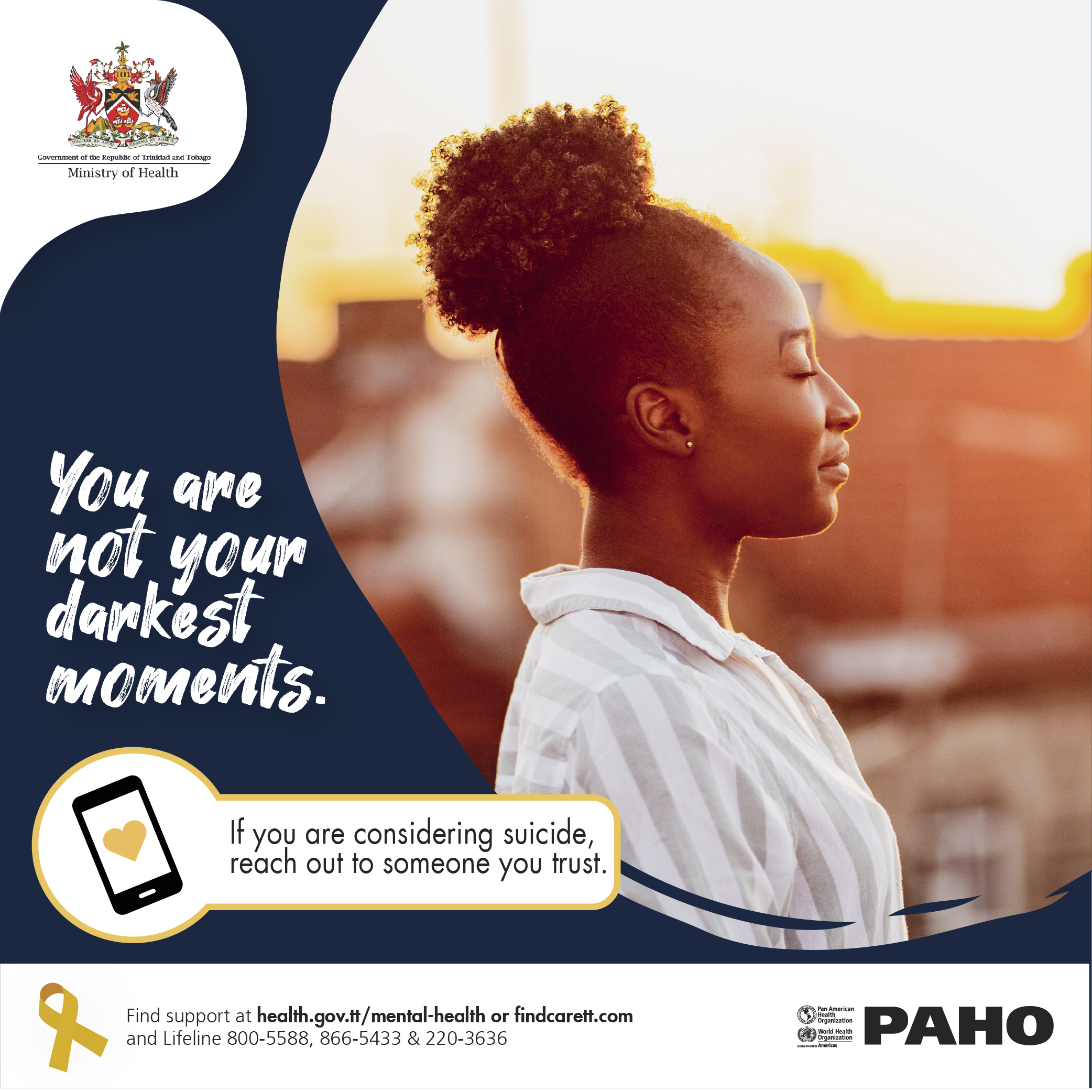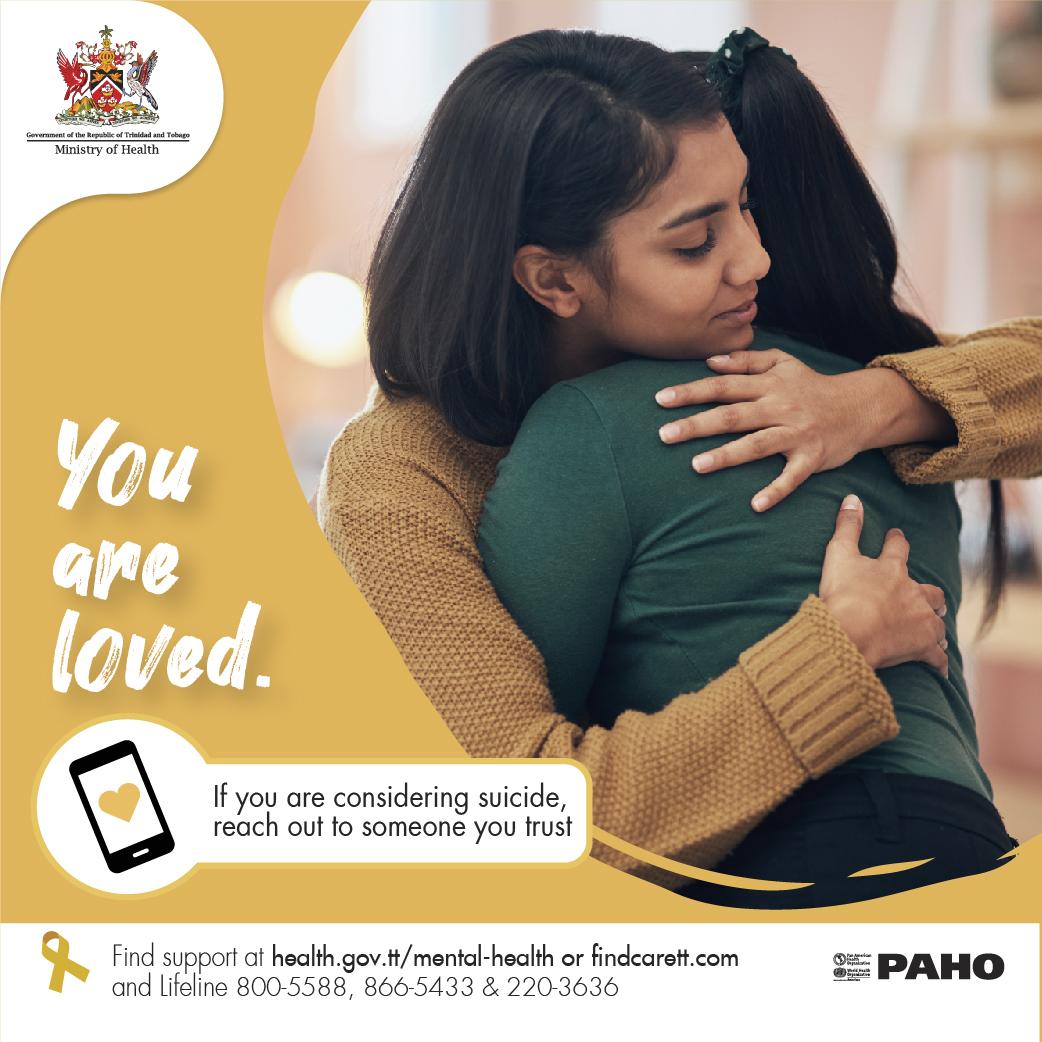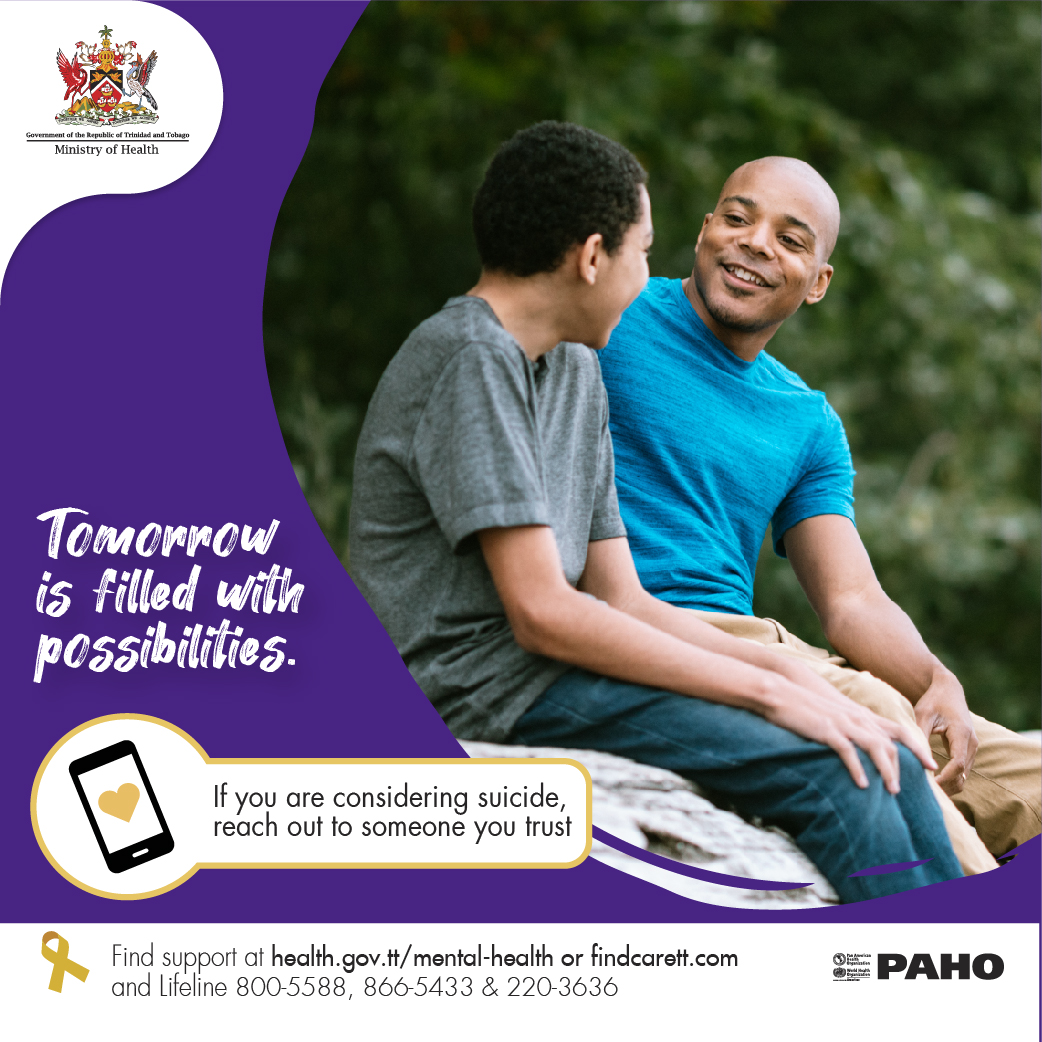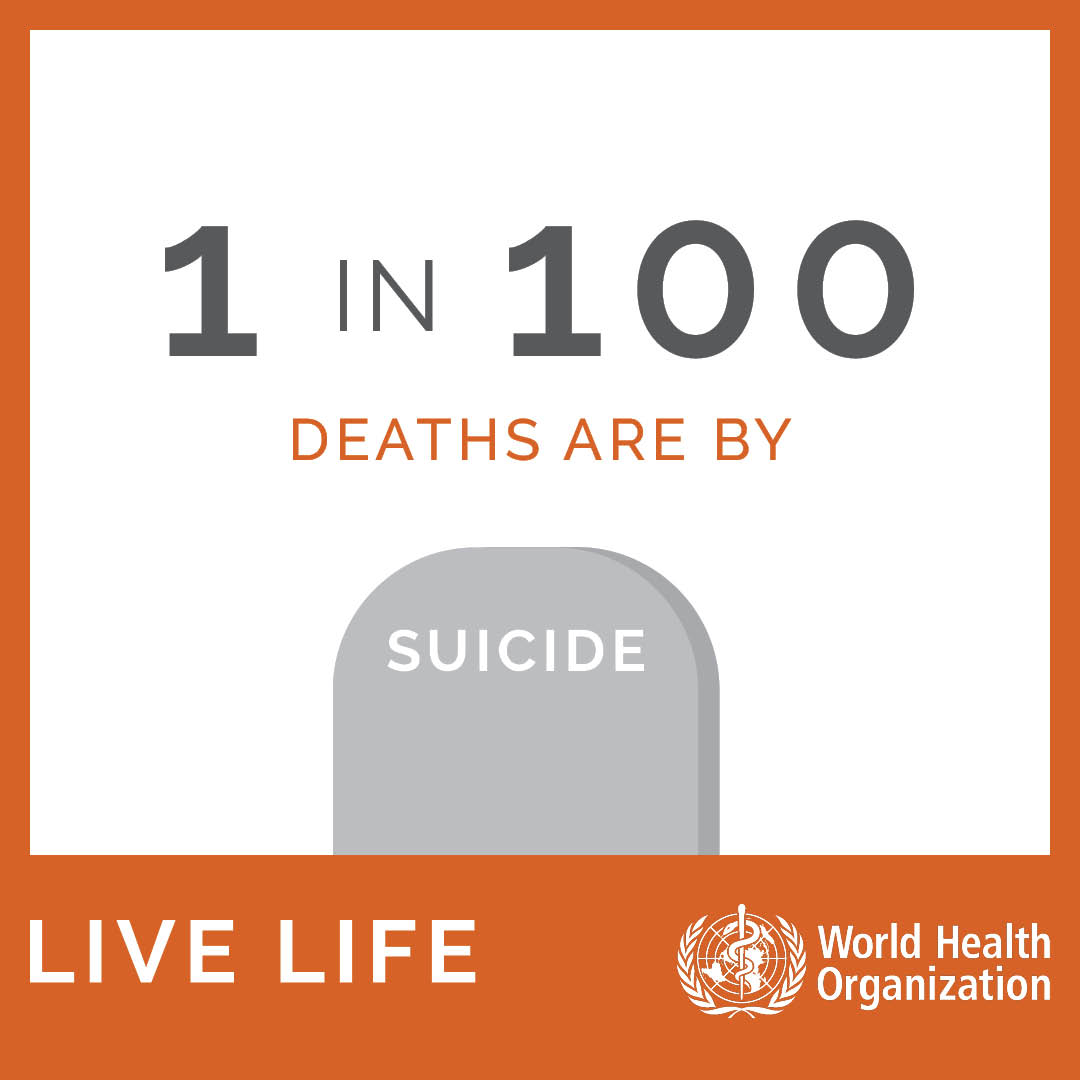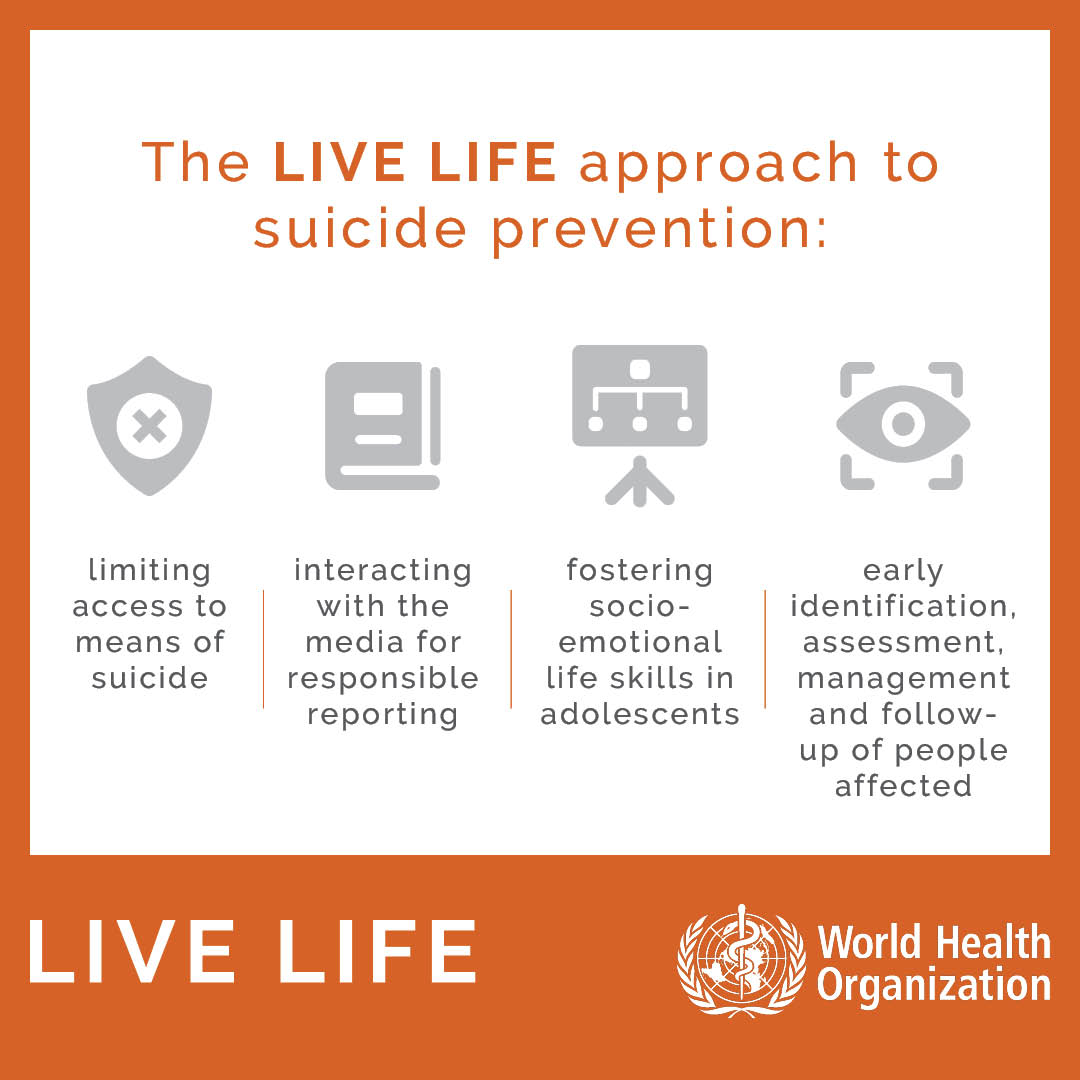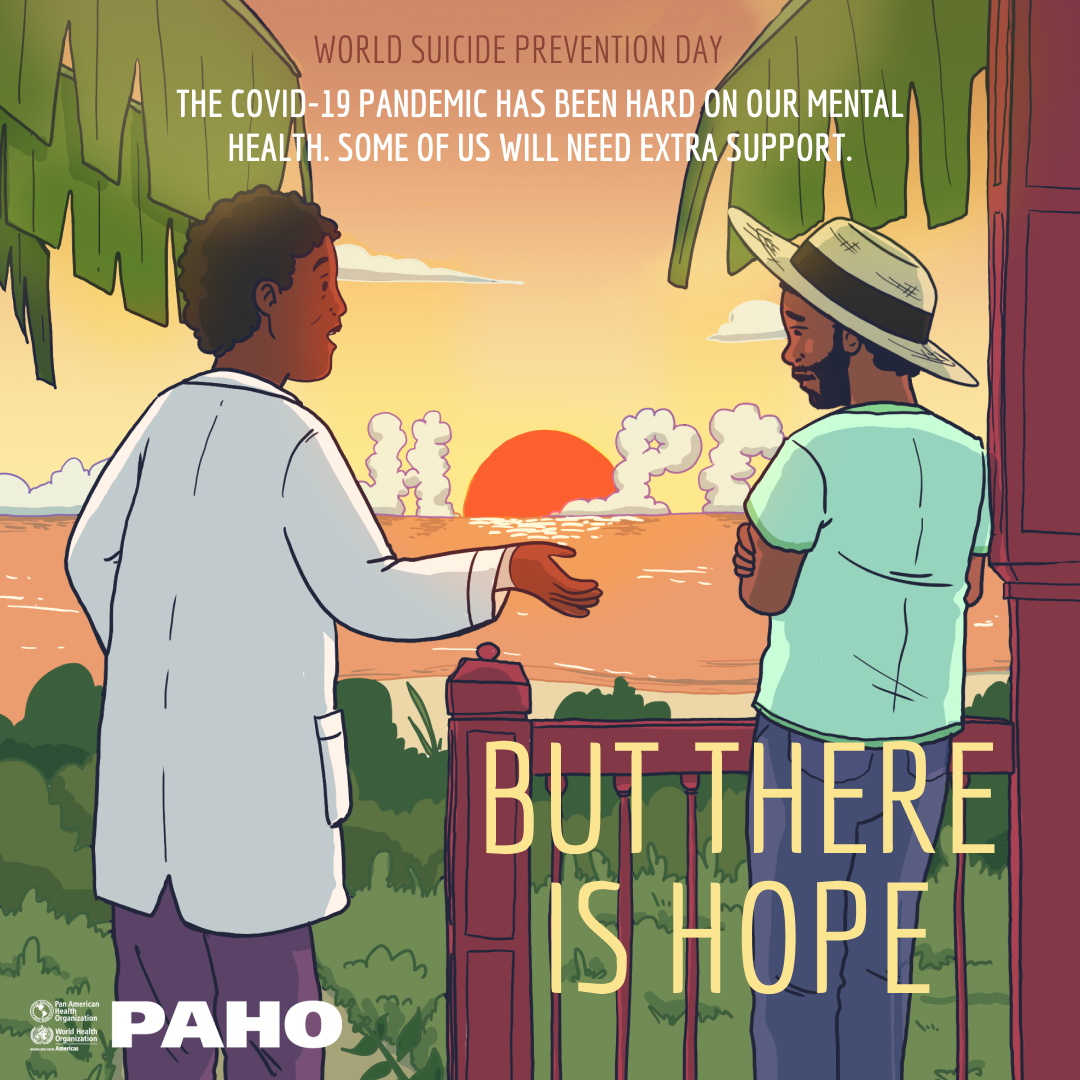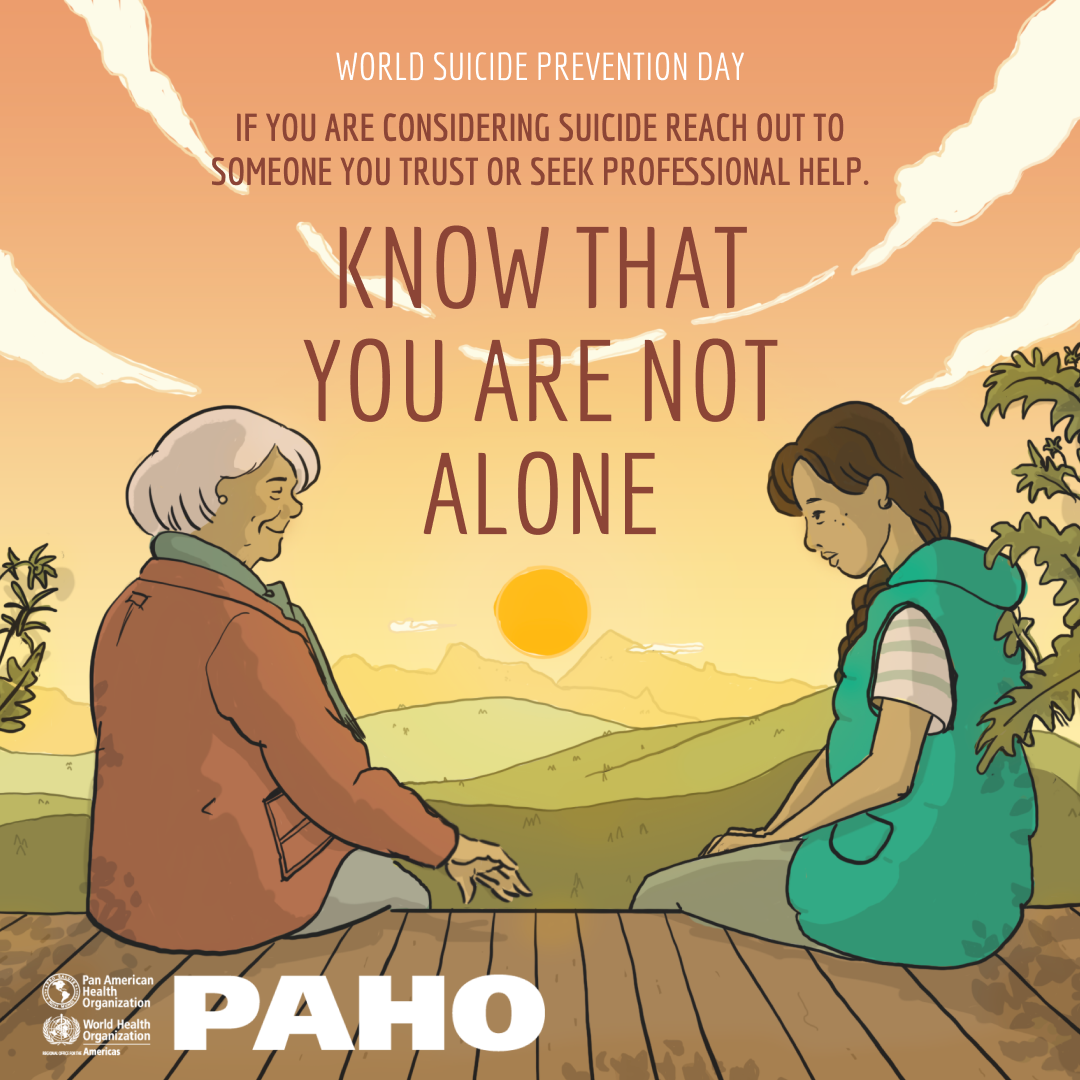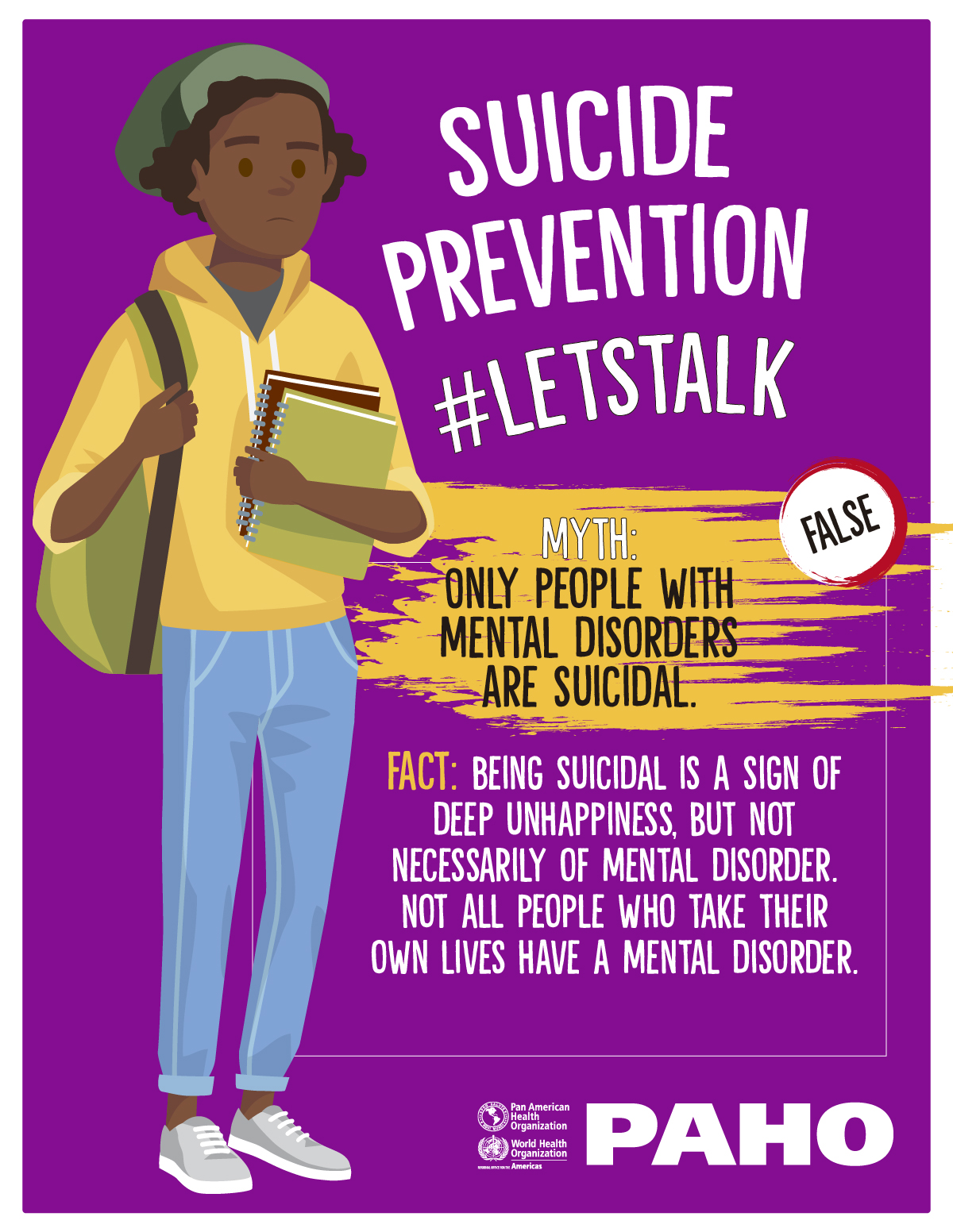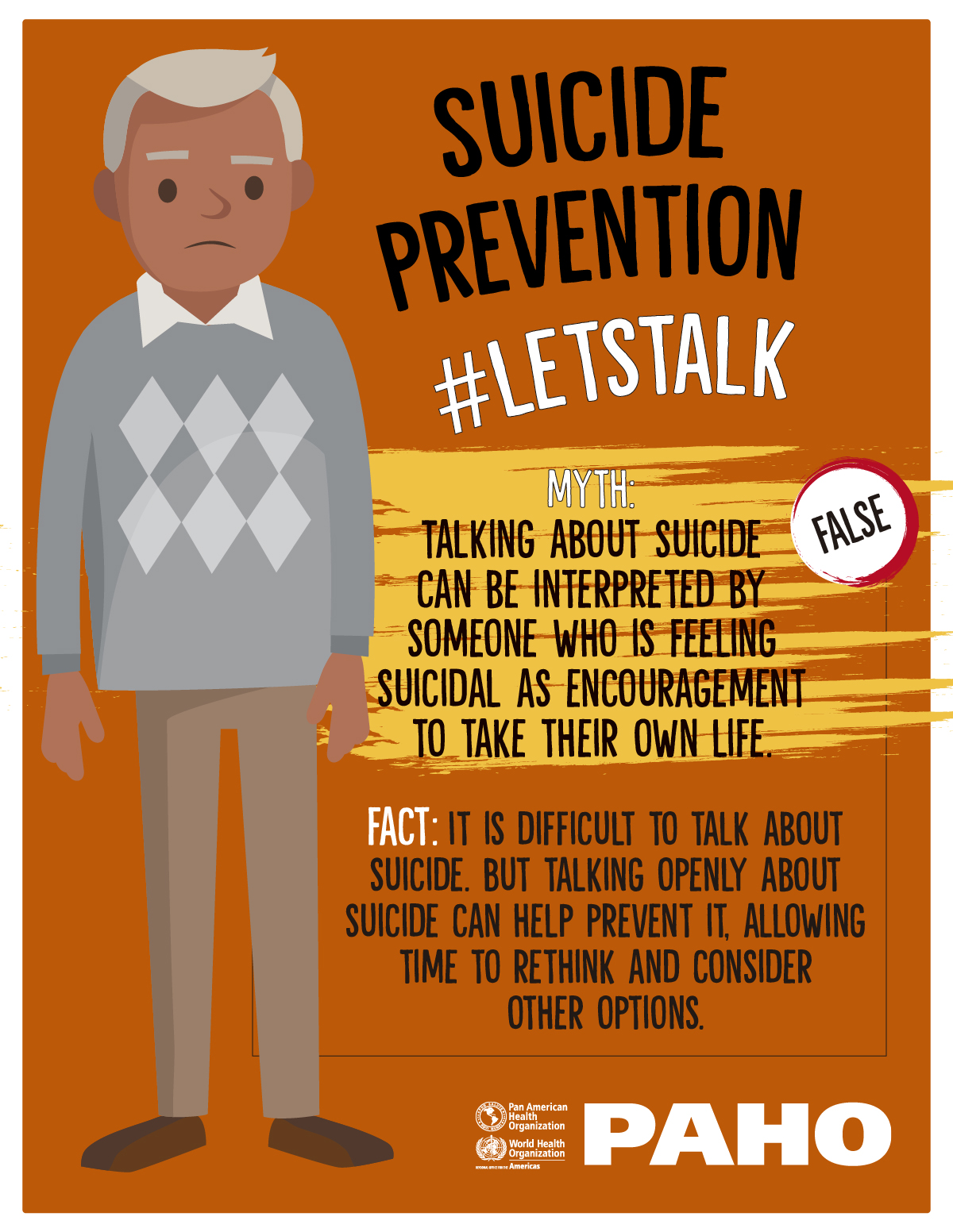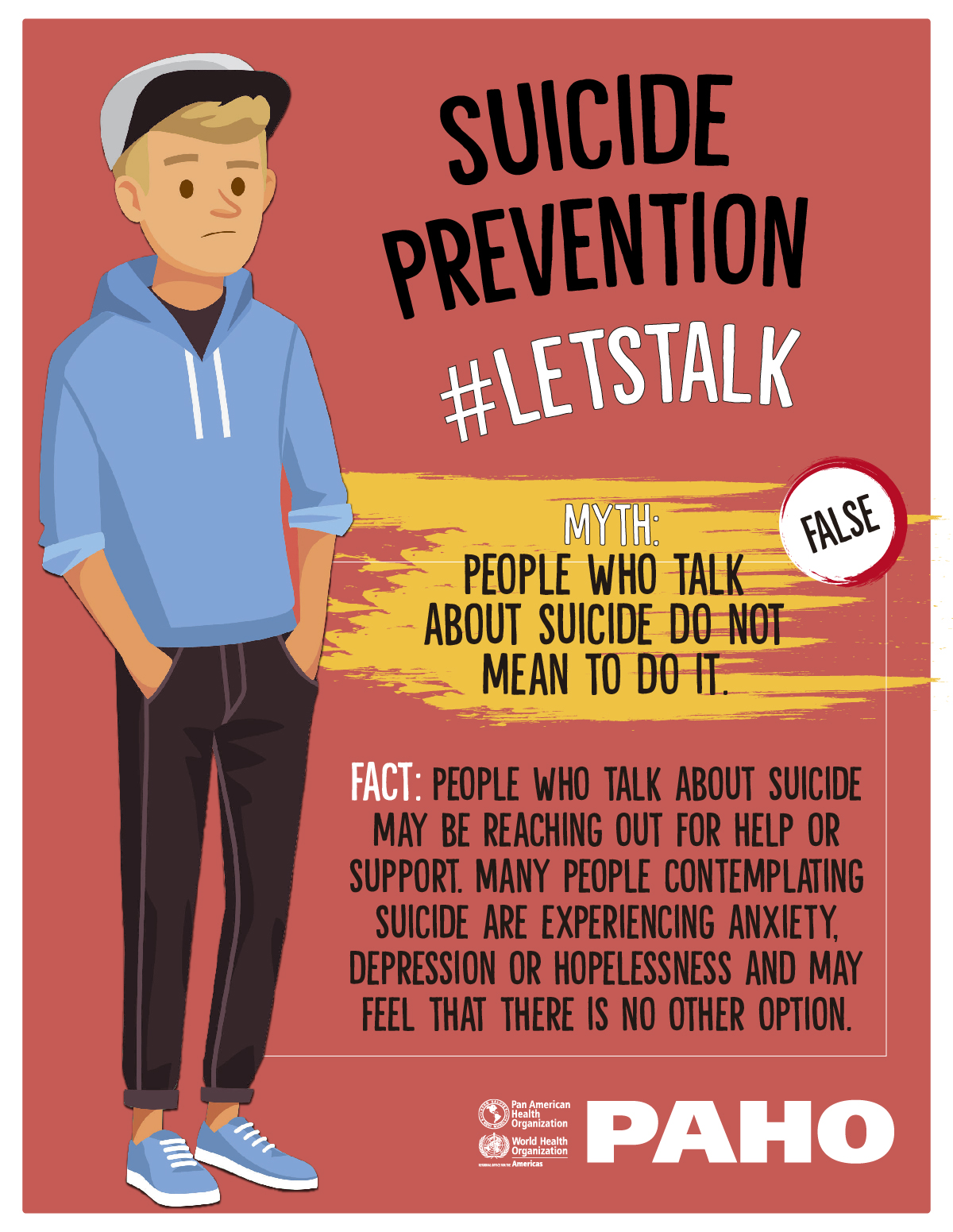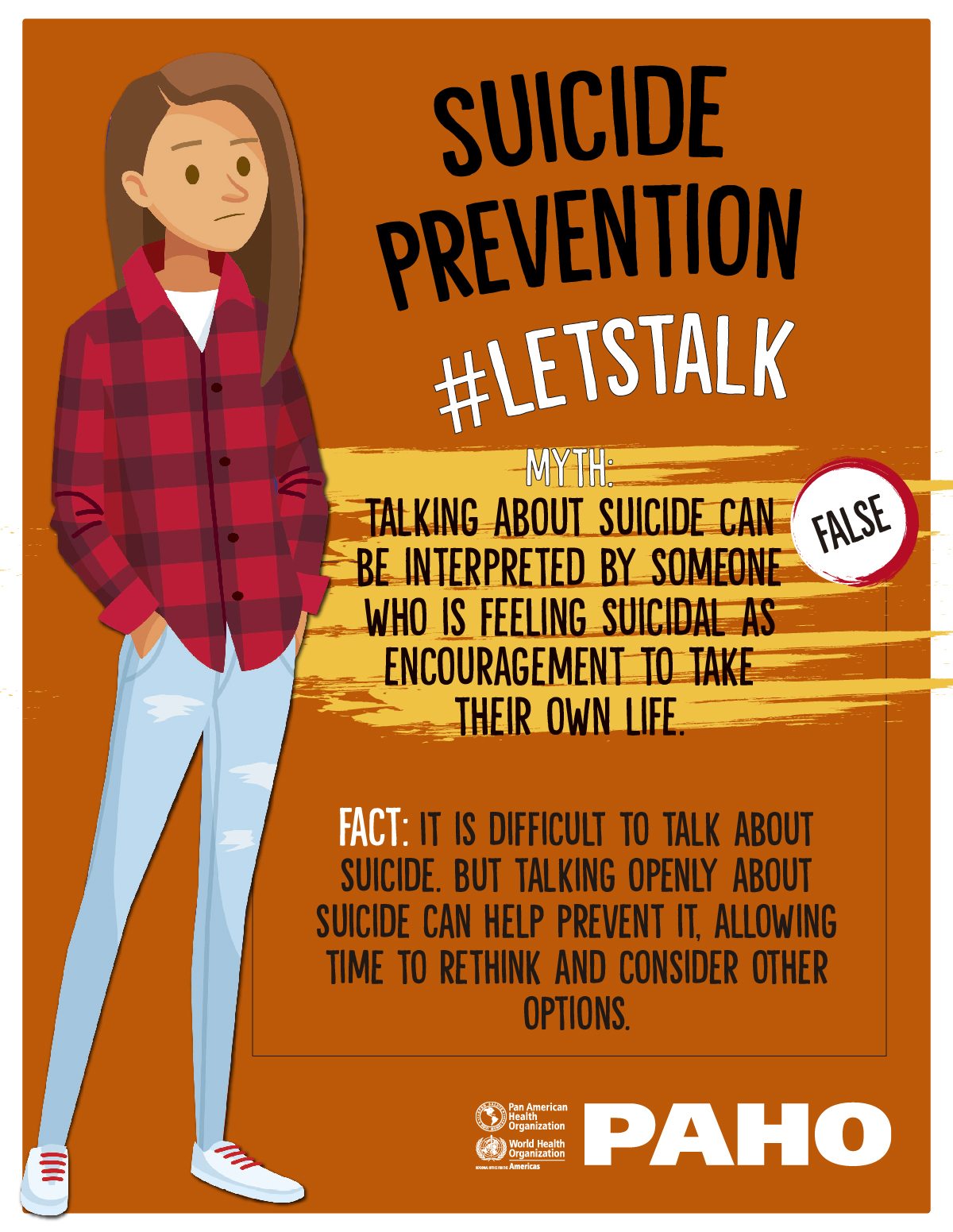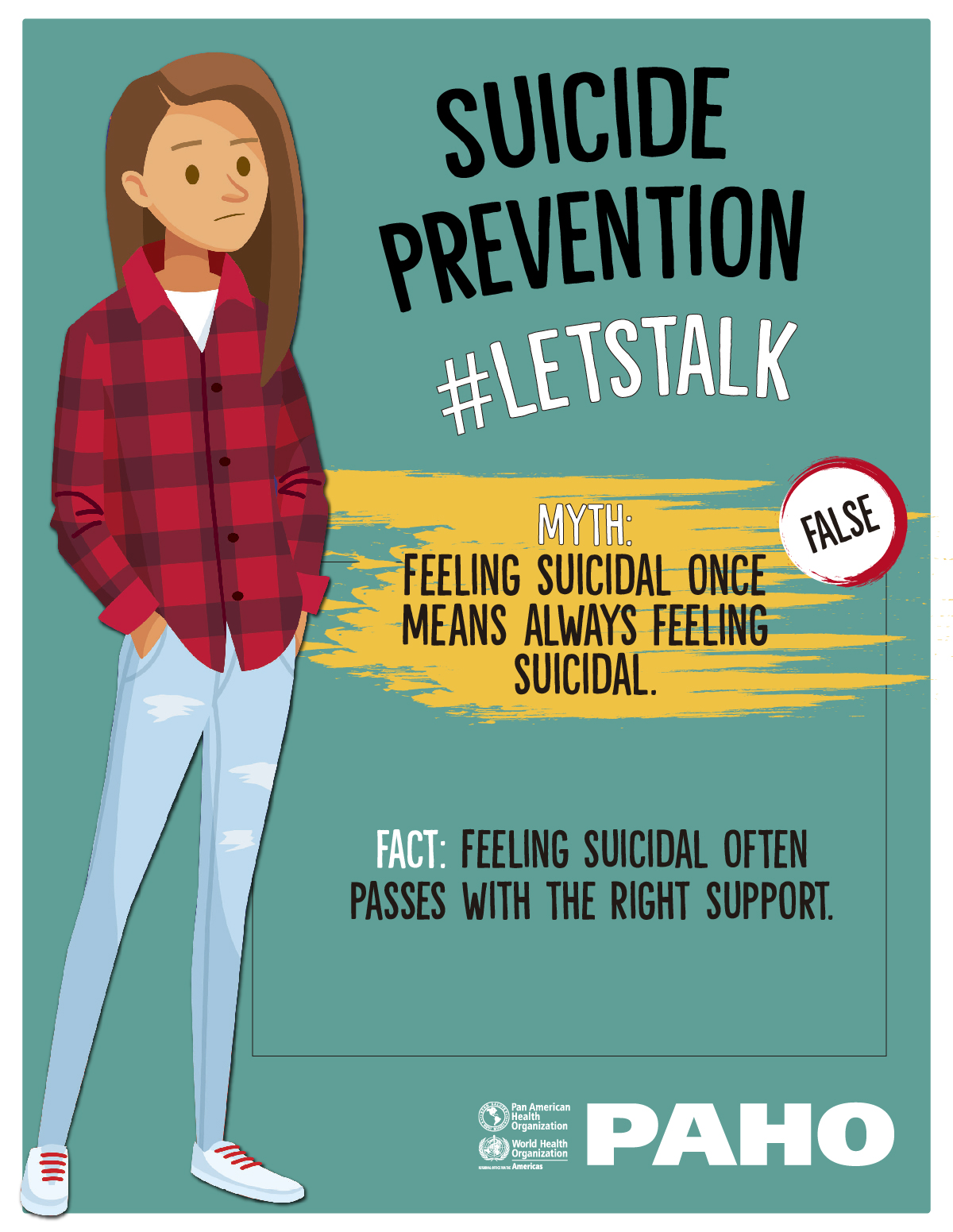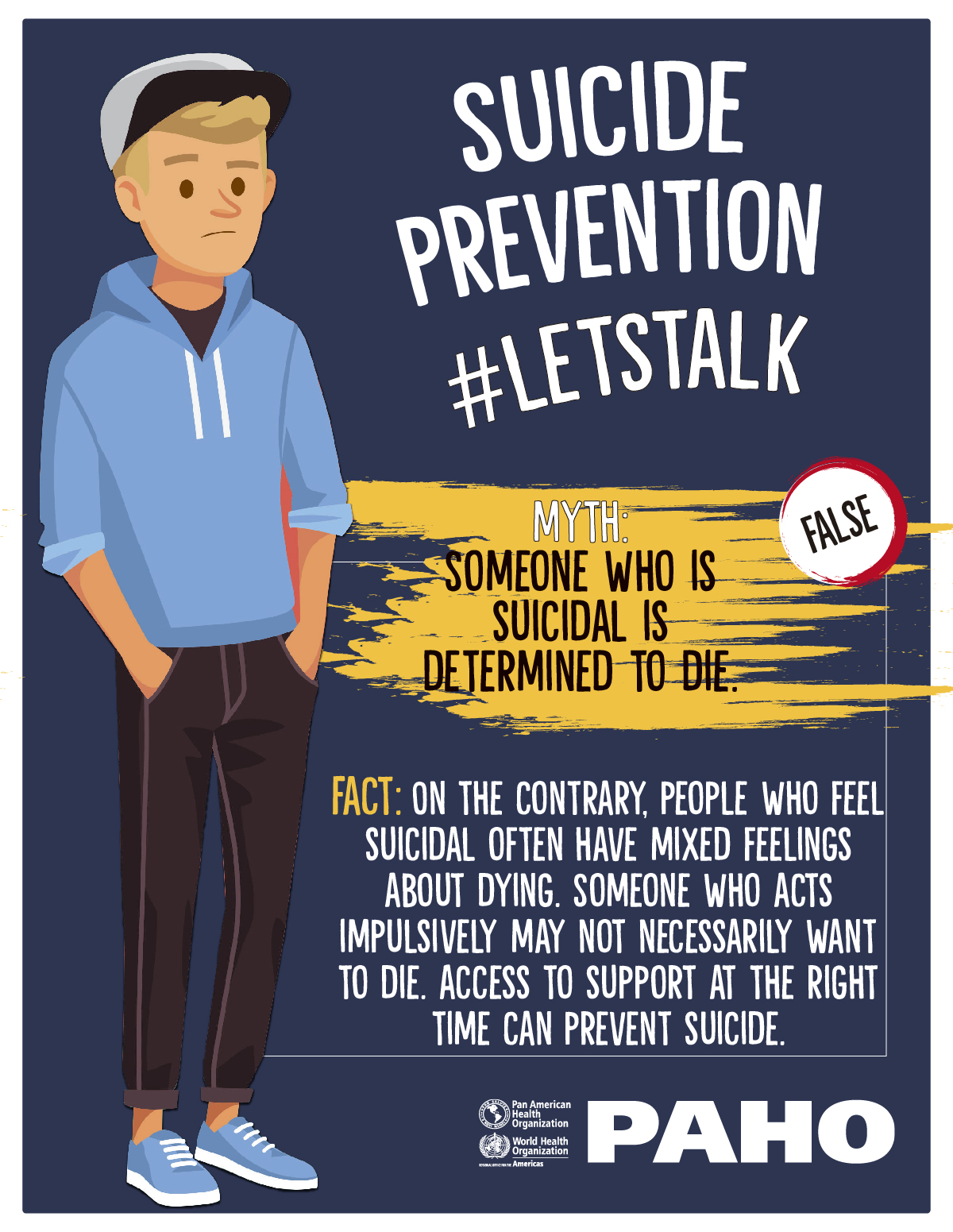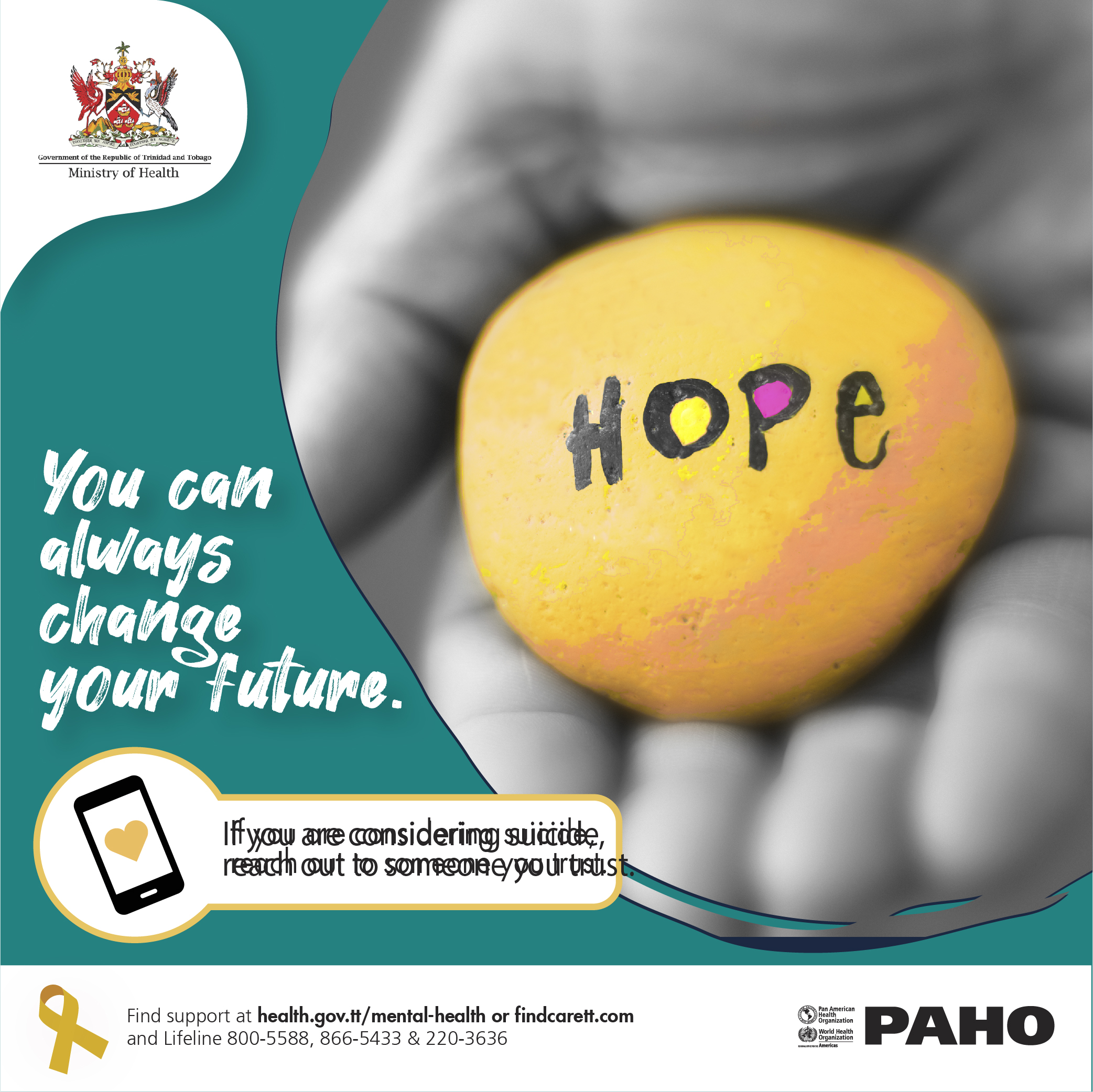
Every 40 seconds someone dies by Suicide.
Suicide remains one of the leading causes of death worldwide, according to WHO’s latest estimates, published today in “Suicide worldwide in 2019”. Every year, more people die as a result of suicide than HIV, malaria or breast cancer – or war and homicide. In 2019, more than 700 000 people died by suicide: one in every 100 deaths, prompting WHO to produce new guidance to help countries improve suicide prevention and care.
Among young people aged 15-29, suicide was the fourth leading cause of death after road injury, tuberculosis and interpersonal violence. Rates vary, between countries, regions, and between males and females. More than twice as many males die due to suicide as females (12.6 per 100 000 males compared with 5.4 per 100 000 females).
Emergency Contact Information
For more Information
Contact the Ministry of Health, Mental Health Unit
Tel: 285-9126 ext 2577, 2571, 2573 and 2590
Monday-Friday 8:00am – 4:00pm
Suicide Prevention Tips
Things you can do to support someone who may be contemplating suicide:
- Ask– Don’t be afraid to ask if someone may be thinking about suicide. Check-in with friends, family and co-workers. Ask if you may be worried.
- Listen– Be patient and non-judgemental when persons share thoughts and feelings about their pain. Try to be understanding and be mindful of how you listen. Give your full attention and show concern. Be aware of your non-verbal reactions.
- Support– Persons thrive with supportive relationships and appropriate intervention. Encourage persons to seek help before they experience crisis. Ask how you can support them during their difficult time.
Things you can do if you may be contemplating suicide:
- Share– Talk with someone you trust. Express your feelings honestly in a safe space
- Survive– Seek the appropriate help sooner than later. Develop a safety plan and let others know how they can support you.
- Thrive– Practice new coping techniques to maintain a positive healthy lifestyle.
Warning Signs
These are indicators that a person may be at a very high risk or in immediate danger of suicide. Seek help urgently!
- Drastic changes in mood
- Saying goodbye to close family and friends and giving away possessions
- Feeling hopeless and like a burden to others
- Talking about wanting to die or kill oneself
- Planning ways to kill oneself
- Increased drug use and reckless behaviour
- Withdrawal from activities of interest and isolation from friends and family
- Showing aggression, Rage and Irritability
- Sleeping too much or too little
Suicide MythBusters
Better Media Coverage of Suicide
Responsible coverage can contribute to suicide prevention by reducing the risk of copycat behavior, helping to change false perceptions, and encouraging people to seek help, said Claudina Cayetano, regional advisor on mental health at the Pan American Health Organization (PAHO).
